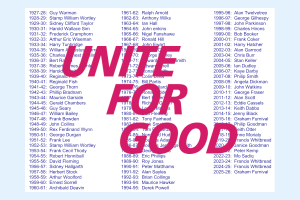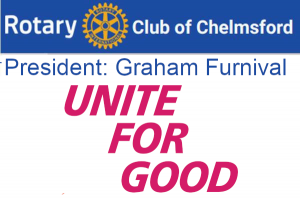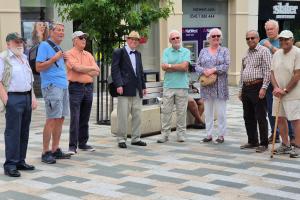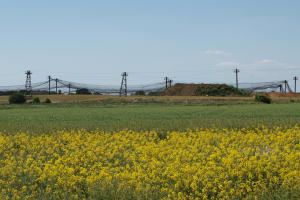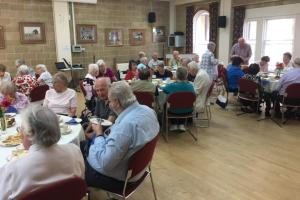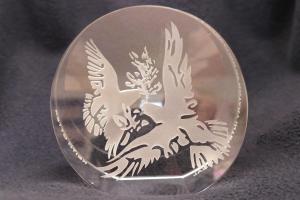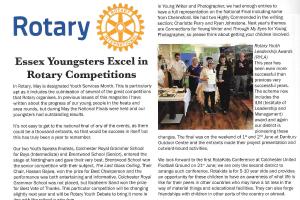Ruth Waine: Mercy Ships
Thu, Jan 21st 2021 at 1:00 pm - 2:15 pm
Hospital ships

Today’s speaker was Ruth Waine, an Orthopaedic Nurse Practitioner who volunteers with Mercy Ships, a charity which runs a hospital ship serving the poorer countries on the west coast of Africa. A second ship, with a wider remit, will shortly be completed.
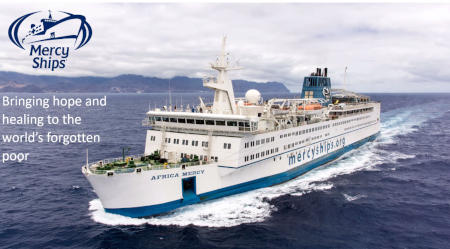 The charity’s three original ships have all been retired. The current ship, the Africa Mercy (see picture), is a converted ferry. In addition to the facilities you would find on any working ship, it contains five operating theatres, 82 ward beds, a radiology department, a laboratory and a pharmacy. Ther crew includes eight Gurkhas to provide security both at sea and in port. Volunteers run the medical facilities and provide other services. There are about voluntary 200 jobs, of which only half are medical.
The charity’s three original ships have all been retired. The current ship, the Africa Mercy (see picture), is a converted ferry. In addition to the facilities you would find on any working ship, it contains five operating theatres, 82 ward beds, a radiology department, a laboratory and a pharmacy. Ther crew includes eight Gurkhas to provide security both at sea and in port. Volunteers run the medical facilities and provide other services. There are about voluntary 200 jobs, of which only half are medical.
The Africa Mercy is registered in Malta but the volunteers come from more than forty different countries. The largest contingent come from the United States, followed by the United Kingdom and the Netherlands. English is the working language. Around 1,300 volunteers pass through the ship each year; they have to pay their own fares to reach the ship and other expenses. Volunteers often give blood on arrival on the ship so that it can later be used for transfusions. Ruth said she actually got to meet one man who had received her blood and was very grateful.
The countries the Africa Mercy visits are among those with the smallest proportions of doctors to population in the world. The Africa Mercy provides general medical, orthopaedic, opthalmic, dental and other services. Patients have to make their own ways to the hospital ship but sometimes the local government will help.
Mercy Ships have a five stage programme for helping poorer countries on the west African coast:
- First, Mercy Ships negotiates a “protocol” with the local government. Among other things, this will include the agreement of a suitable berth for the ship. This is essential because the Mercy Ship will be taking up space that might otherwise be used by commercial ships handling imports and exports.
- Secondly, a team will visit the country to assess the medical needs and the need for medical training and other help. In one country, for example, Mercy Ships arranged for the complete refurbishment of a local operating theatre. In another it was realised the local dental school was sending out “qualified” dentists who had never looked in anyone’s mouth during their studies. Proper dental “cubicles” were set up in the dental school where patients could receive treatment from the students and further training was given to their trainers.
- The Mercy Ship will be deployed after the assessment.
- While there, the ship will also provide local people with training and other support. Local medical staff will be invited to the ship to observe and take part in procedures. The support offered is not only in the medical field, though. Local people may be shown how to farm more effectively and be given basic farming equipment, such as wheelbarrows.
- Finally, the impact the ship had will be assessed.
If further help is to be given, these stages will be repeated. All services are given completely free.
In Senegal alone:
- Mercy Ship volunteers performed 1,407 life-changing operations;
- 5,591 patients have been treated in the renovated dental clinic;
- 535 patients can now see clearly again; and
- training has been given to 1,286 local healthcare professionals.
As mentioned, the Africa Mercy is a converted ferry. The new ship, the Global Mercy, is being purpose-built. It will have six operating theatres, 102 acute care beds, seven intensive care beds and teaching and conference space.
'What We Do' Main Pages:
